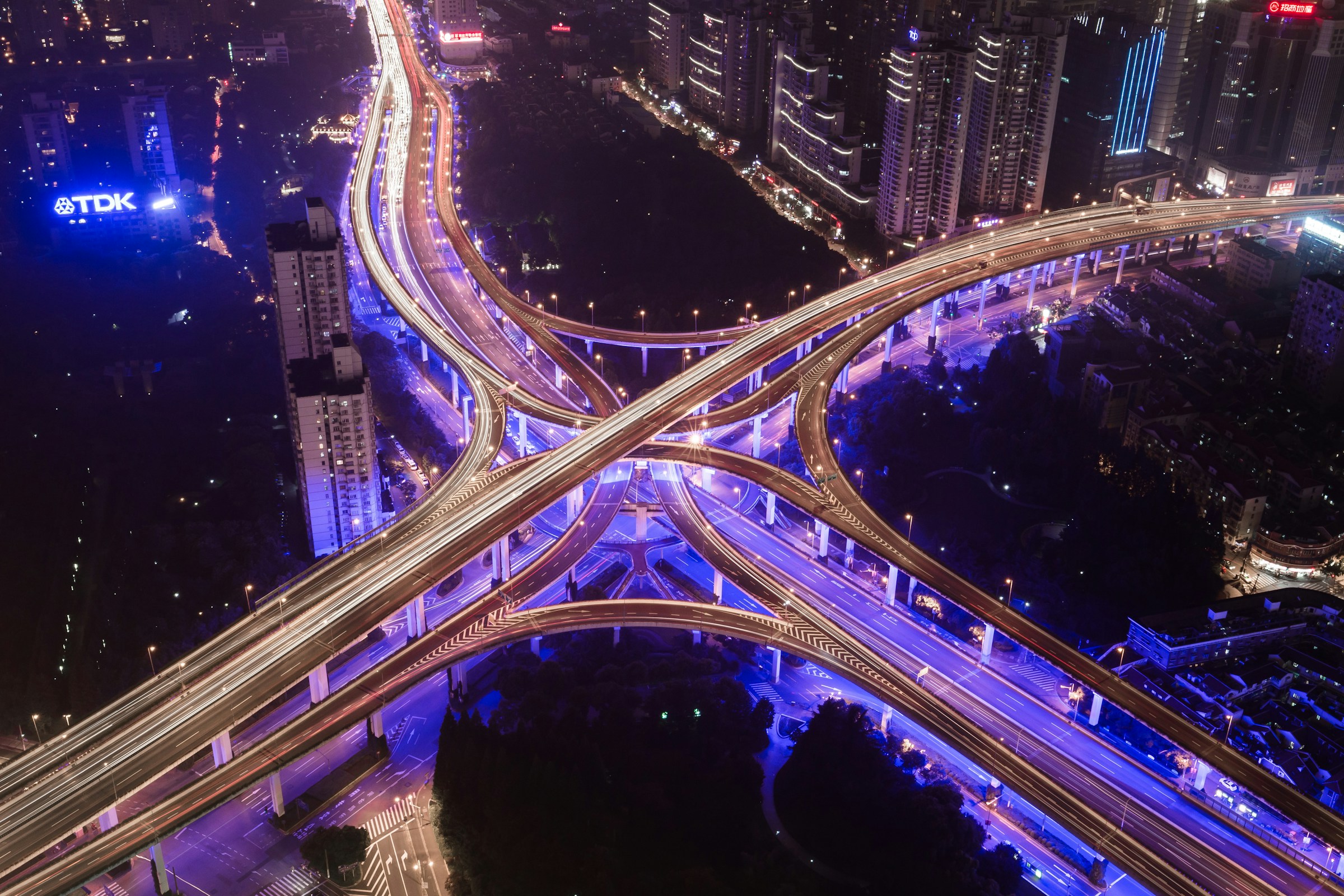How to implement AI for real-time traffic management in smart cities?

Smart cities are revolutionizing the way we live and commute. In the throes of rapid urbanization, traffic congestion has emerged as a critical challenge. But with the advent of artificial intelligence (AI) and machine learning, we now have unparalleled tools to tackle traffic woes. This article delves into the intricate process of implementing AI for real-time traffic management in smart cities, providing a comprehensive guide for city planners, engineers, and policymakers.
The Role of AI in Traffic Management
In modern urban environments, the management of traffic is pivotal for ensuring smooth transit and public safety. AI, with its prowess in processing vast amounts of data and learning from it, holds the key to intelligent transport systems. By leveraging AI, cities can enhance traffic flow, reduce congestion, and improve transportation systems.
Avez-vous vu cela : What are the methods for securing AI-driven e-learning platforms?
AI systems, particularly those integrating IoT (Internet of Things) devices, can collect and analyze traffic data in real-time. This enables smart city infrastructure to respond dynamically to changing traffic conditions. AI algorithms can predict traffic patterns, optimize traffic signals, and even manage public transportation routes more effectively. In essence, AI transforms static traffic management systems into responsive, adaptive networks.
The Building Blocks of an AI-Based Traffic Management System
To implement AI in traffic management, a city must first establish a robust foundation. This involves a blend of technological infrastructure and strategic planning. The critical components include:
En parallèle : How to develop a secure AI-powered legal research tool?
Data Collection Systems
AI relies heavily on data. For effective traffic management, cities need to deploy a network of sensors, cameras, and IoT devices. These devices gather a plethora of information about road traffic, including vehicle counts, speeds, and traffic flow patterns. Enhanced traffic monitoring capabilities are essential for creating a detailed picture of the current traffic conditions.
Data Processing and Storage
Once collected, the data must be processed. This requires high-capacity servers and cloud storage solutions capable of handling large data volumes. Cities must invest in data management systems that can efficiently process and store this information. Advanced data analytics platforms are also crucial to transform raw data into actionable insights.
Machine Learning Models
The core of AI traffic management lies in machine learning models. These models analyze historical and real-time data to predict traffic congestion and identify the best strategies for managing traffic flow. They are trained using vast datasets to recognize patterns and make decisions based on complex algorithms.
Integration with Existing Infrastructure
For an AI-based system to be effective, it must integrate seamlessly with existing transportation systems. This includes traffic signals, public transport schedules, and road management systems. Smart cities need to ensure that their AI solutions are compatible with current infrastructure to avoid disruptions and maximize efficiency.
Real-Time Traffic Monitoring and Control
Once the groundwork is laid, the next step is to leverage AI for real-time traffic monitoring and control. This involves the continuous assessment of traffic conditions and the dynamic adjustment of traffic management strategies.
Dynamic Traffic Signals
One of the most prominent applications of AI in traffic management is the optimization of traffic signals. Traditional traffic lights operate on fixed schedules, which often fail to adapt to real-world conditions. AI-driven systems, however, can adjust signal timings based on real-time traffic flow data. This reduces waiting times and eases congestion, leading to smoother and more efficient road usage.
Predictive Traffic Management
AI models can predict traffic conditions by analyzing historical data and current trends. This enables proactive traffic management, where potential congestion points are identified before they become problematic. By rerouting traffic and adjusting signal priorities ahead of time, cities can prevent traffic jams and ensure a smoother flow of vehicles.
Incident Detection and Response
AI systems are also adept at detecting traffic incidents, such as accidents or road blockages, in real-time. By rapidly identifying these events, AI can alert relevant authorities and initiate appropriate responses, such as dispatching emergency services or rerouting traffic. This enhances public safety and minimizes the impact of unforeseen incidents on overall traffic conditions.
Machine Learning and Predictive Analytics in Traffic Management
Machine learning and predictive analytics are at the heart of intelligent traffic management systems. These technologies enable cities to foresee and mitigate traffic issues before they escalate.
Pattern Recognition
Machine learning models excel at recognizing patterns in traffic data. By analyzing historical traffic flow and identifying recurring congestion points, these models can predict future traffic conditions with high accuracy. This allows cities to implement preemptive measures, such as adjusting signal timings or diverting traffic, to avoid congestion.
Adaptive Learning
One of the strengths of AI is its ability to learn and adapt over time. As machine learning models are exposed to more data, they become better at predicting traffic patterns and making informed decisions. This continuous improvement ensures that traffic management systems remain effective even as urban landscapes and traffic behaviors evolve.
Real-Time Adjustments
Predictive analytics enable real-time adjustments to traffic management strategies. By continuously monitoring traffic conditions and comparing them with predicted patterns, AI systems can dynamically optimize traffic flow. This includes rerouting vehicles, adjusting traffic signals, and providing real-time traffic updates to drivers through navigation apps.
The Benefits and Challenges of AI-Based Traffic Management
Implementing AI for real-time traffic management offers numerous benefits, but it also presents challenges that cities must address.
Benefits
- Reduced Congestion: AI systems optimize traffic flow, reducing bottlenecks and minimizing travel times.
- Improved Public Safety: Rapid incident detection and response enhance safety for drivers and pedestrians.
- Environmental Impact: Smoother traffic flow leads to lower fuel consumption and reduced emissions, contributing to environmental sustainability.
- Cost Efficiency: AI-driven systems can reduce the need for extensive physical infrastructure upgrades, leading to cost savings for cities.
Challenges
- Initial Investment: The setup of AI-based traffic management systems requires significant investment in technology and infrastructure.
- Data Privacy: Collecting and processing vast amounts of traffic data raises concerns about privacy and data security. Cities must implement robust measures to protect citizens' information.
- Integration: Ensuring seamless integration with existing infrastructure can be complex and requires careful planning and coordination.
In conclusion, the implementation of AI for real-time traffic management in smart cities represents a paradigm shift in urban planning and public safety. By harnessing the power of data and machine learning, cities can create dynamic, responsive transportation systems that adapt to ever-changing traffic conditions. The benefits are manifold, from reduced congestion and improved public safety to environmental sustainability and cost efficiency.
However, the journey to AI-driven traffic management is not without its challenges. Cities must invest in the necessary infrastructure, ensure data privacy, and integrate new technologies with existing systems. With careful planning and strategic investment, the promise of intelligent transport systems can be fully realized, leading to a future where traffic congestion is a thing of the past and urban mobility is smoother, safer, and more efficient.
As we stand on the cusp of this technological revolution, the words to remember are adaptability and innovation. The cities that embrace AI for traffic management today will be the ones leading the way towards a smarter, more connected, and more sustainable future.
